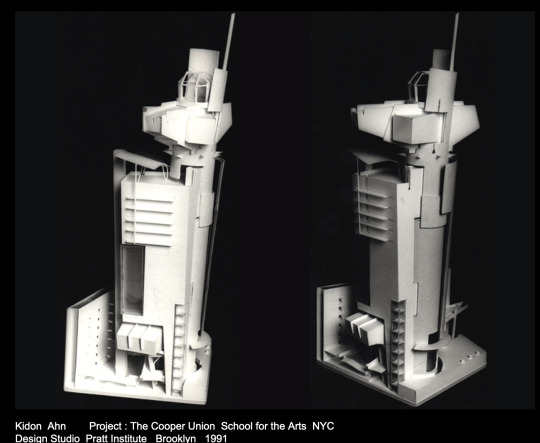Photo

Web Site: http://www.danielkbrown.com
Tumblr Archive: http://danielkbrown.tumblr.com/archive
Work by my Master's Students: http://cargocollective.com/danielkbrown
Instagram: https://www.instagram.com/danielkbrownarchitecture
Work by my Undergraduate Students: http://architecturevictorious.tumblr.com
20 notes
·
View notes
Text
Through shapes, colors, and the elements on their facades, many architects have sought to bring a sense of movement to works that are otherwise physically static. Santiago Calatrava, Jean Nouvel, and Frank Gehry are only a few of the masters who managed to provide a dynamic effect to motionless structures, highlighting the work in context using formal strategies borrowed from the plastic arts. In other cases, however, architects have also opted for physically kinetic structures that could bring a unique aesthetic or functional dimension to the work. Source Link.
0 notes
Text
“The house itself has been omitted from the drawing, but if mechanical services continue to accumulate at this rate it may be possible to omit the house in fact." Source: Reyner Banham, "A Home is not a House," illustrated by Francois Dallegret, Art in America, 2 (1965), p 70.
0 notes
Text
There are no stretched or distorted single surfaces in machines. There is only euclidean geometry because the pieces come directly from existing industrial processes. There is a rigor pre-built in the design process which predicates material actualization.
Caleb White, "Machine Aesthetics," AD: Architectural Design, Nov/Dec 2024
0 notes
Text
"I believe that a work of literature can not only be a source of inspiration for an architectural project, but that a literary work can more directly in-form architecture: that is, a novel can be the veritable client for a building's design. This project will be derived from literature!"
Douglas Darden, handwritten note, undated, Oxygen House File, Darden Archive (quoted in Peter Schneider, "The House at the End of Time: Douglas Darden's Oxygen House", p13.
3 notes
·
View notes
Text
"She philosophically noted dates as they came past in the revolution of the year; . . . her own birthday; and every other day individualized by incidents in which she had taken some share. She suddenly thought one afternoon, . . . that there was another date, of greater importance [than all] those; that of her own death, . . . a day which lay sly and unseen among all the other days of the year, giving no sign or sound when she annually passed over it; but not the less surely there. When was it?"
—Thomas Hardy, Tess of the d'Urbervilles, p 81.
1 note
·
View note
Text

Sophie Calle, The Bathrobe 1988/89
Caption: "I was eighteen years old. I rang the bell. He opened the door. He was wearing the same bathrobe as my father. A long white terrycloth robe. He became my first love. For an entire year. he obeyed my request and never let me see him naked from the front. 0nly from the back. And so, in the morning light, he would get up carefully turning himself away, and gently hiding inside the white bathrobe. When it was all over he left the bathrobe behind with me."
0 notes
Text
"I do not believe the house is a safe place. For me, it is a collision of dream, nightmare and circumstance: a portrait of an inner life. The primal shelter is also the site of primal fears. Its interiors are a map of the conscious and the unconscious: of their securities and insecurities. There is danger in the house. Closets, hallways, stairways, doors and windows, attics, basements, eaves and cabinets expand and contract with fear and desire. They are the night side of the house, in which the identity and security of domestic life is symbolically tested: they form another realm where daily life is displaced, condensed, fragmented. Within every contented home there resides the house that anxiety built and buried to counterbalance the security of the known self."
Anne Troutman, "Inside Fear: Secret Places and Hidden Places in Dwellings" in Nan Ellin, ed. Architecture of Fear, New York: Princeton Architectural Press, 1997, p.143.
1 note
·
View note
Text
"I wish to demonstrate that a work of literature could not only be a source of inspiration for an architectural project, but that a novel could more directly in-form architecture; that is, a novel could be the veritable client for a building design."
Darden, Douglas. "Melvilla: An Architect on Moby-Dick," Melville Society Extracts, Number 91, November 1992. p. 1.
1 note
·
View note
Text
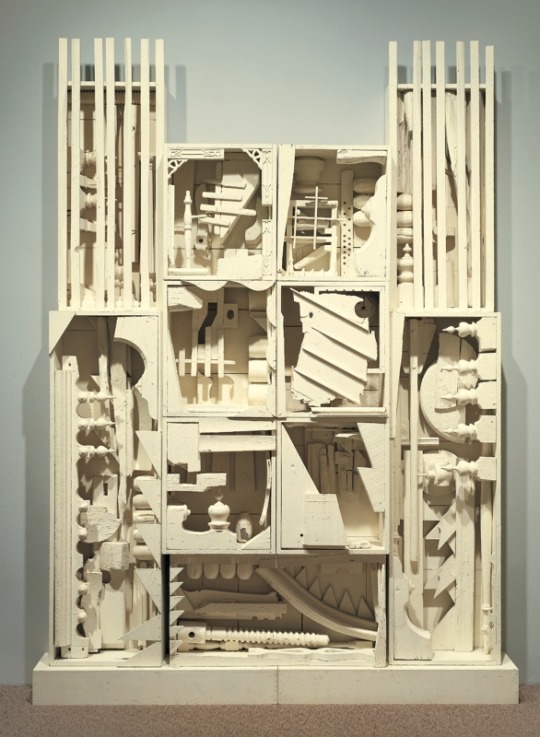

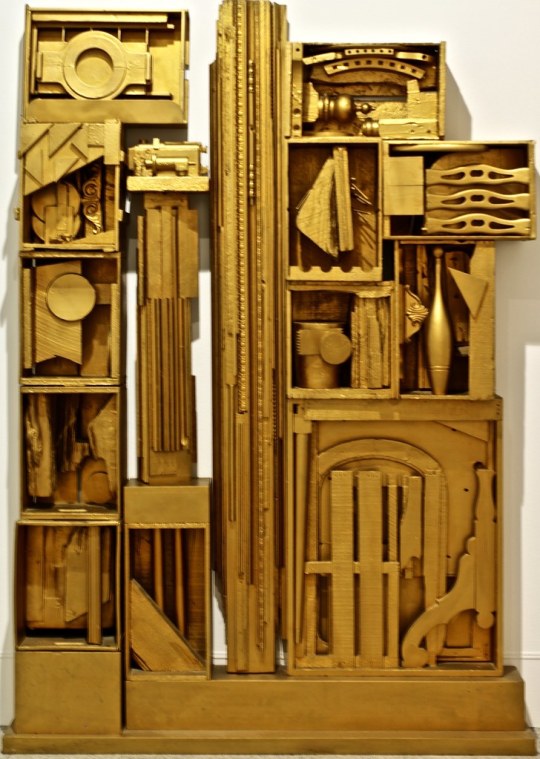
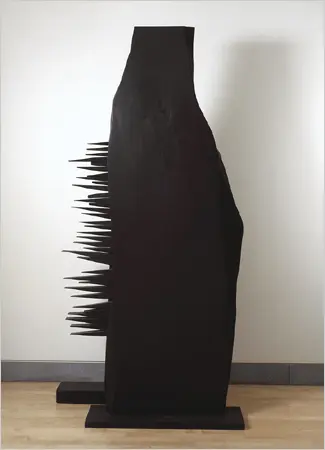
Louise Nevelson
3 notes
·
View notes
Text



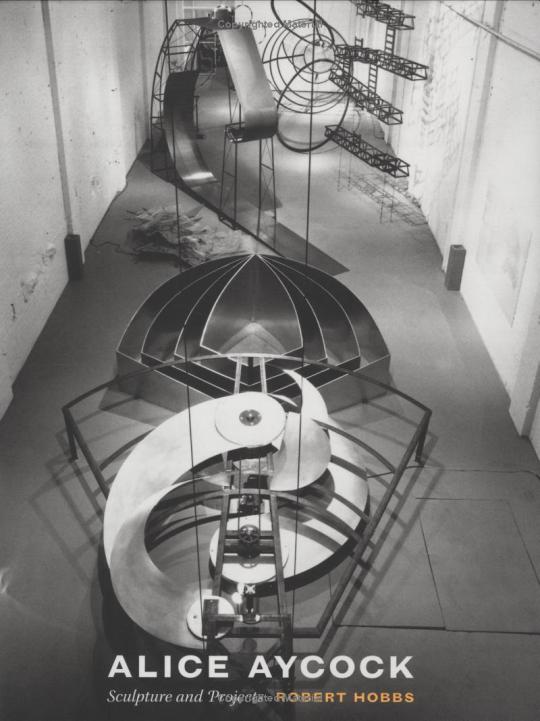
Alice Aycock
"Collected Ghost Stories"
"Some Stories are Worth Repeating"
"City of the Walls: A Narrow City, a Thin City" 1978
Sculptures and Projects
1 note
·
View note
Text
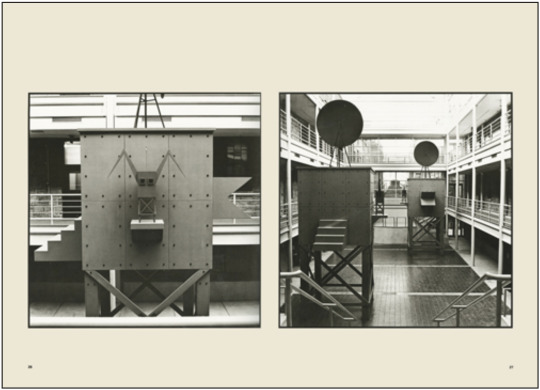
THE RIGA PROJECT by John Hejduk
"These two structures belong to the complementary side of the role of architecture, the one that we always forgot: to shelter our dreams and the mystery of our presence here."
—Meton Gadelha
2 notes
·
View notes
Quote
In Spatial Recall, architect Donlyn Lyndon stresses the connection of place and memory, saying that “place... is space that can be remembered— that you can hold in the mind and consider” (64). Lyndon argues that architectural frames can emphasize specific locations, objectives, or narratives through memory engagement (73-74)
Donlyn Lyndon, Spatial Recall
3 notes
·
View notes
Photo

Bryan Cantley, school project c1990s
12 notes
·
View notes
Quote
Complex systems tend to locate themselves at a place we call 'the edge of chaos.' We imagine the edge of chaos as a place where there is enough innovation to keep a living system vibrant, and enough stability to keep it from collapsing into anarchy. It is a zone of conflict and upheaval, where the old and the new are constantly at war.
Finding the balance point must be a delicate matter––if a living system drifts too close, it risks falling over into incoherence and dissolution; but if the system moves too far away from the edge, it becomes rigid, frozen, totalitarian. Both conditions lead to extinction. Too much change is as destructive as too little. Only at the edge of chaos can complex systems flourish.
Michael Crichton, The Lost World
3 notes
·
View notes
